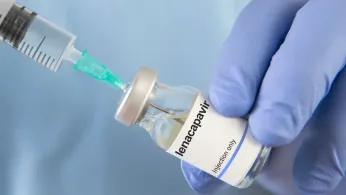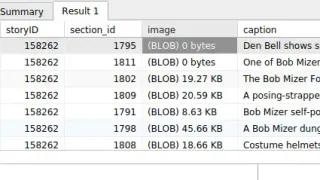
Jul 1
FDA Approves Twice-Yearly HIV Prevention Injection, Marking Major Advance for LGBTQ+ Communities
READ TIME: 2 MIN.
In a landmark move for HIV prevention, the U.S. Food and Drug Administration (FDA) recently approved lenacapavir (Yeztugo; Gilead Sciences), a twice-yearly, long-acting injectable treatment for pre-exposure prophylaxis (PrEP). This new option is poised to make a significant impact on HIV prevention strategies, particularly within LGBTQ+ communities, by simplifying adherence and reducing the frequency of required medical visits. Prior to this, injectable PrEP options required up to six injections per year. Lenacapavir's biannual dosing is expected to improve adherence among individuals who have faced barriers to more frequent clinic appointments, an issue disproportionately affecting LGBTQ+ individuals due to stigma and systemic healthcare inequities .
HIV/AIDS continues to disproportionately impact LGBTQ+ people, especially gay, bisexual, and transgender individuals, due to a range of factors including stigma, discrimination, and legal barriers to health access. Global campaigns over the past decade have focused on reducing stigma and promoting treatment engagement. The Undetectable = Untransmittable (U=U) campaign, launched in 2016 by the Prevention Access Campaign, played a key role in shifting public understanding: individuals with HIV who achieve viral suppression through treatment cannot sexually transmit the virus. This scientific consensus, now recognized by major health agencies, has helped reduce stigma and encourage more LGBTQ+ people to engage in care .
The UNAIDS 2025 targets have placed renewed emphasis on removing societal and legal barriers to HIV care, especially for marginalized groups such as LGBTQ+ communities. These interim goals aim to ensure that people living with HIV and those most at risk feel safe accessing services. Integrated service delivery—linking HIV prevention and treatment with broader health and social services—is seen as essential for sustainable progress. This approach prioritizes the needs of people living with HIV and at-risk communities, addressing the inequalities that fuel the spread of HIV .
The international focus has also shifted toward recognizing the intersection of HIV response with broader human rights, poverty reduction, and sustainable development. Achieving these goals requires not only medical interventions like PrEP and antiretroviral therapy, but also legal reforms, education, and community empowerment. The process leading up to the 2025 targets included an extensive review of effective strategies, ultimately concluding that societal enablers—such as reducing stigma and legal discrimination—are just as vital as clinical advancements .
The approval of twice-yearly injectable PrEP is a significant leap forward in HIV prevention, but experts caution that medical advances alone are insufficient. Continued investment in community-led initiatives, legal reforms, and integrated health services is needed to reach ambitious global targets. The focus remains on ensuring equitable access for all, with special attention to those facing intersecting forms of marginalization.
As the world moves toward the UNAIDS 2030 goals, the combination of new biomedical tools, integrated care models, and community leadership offers renewed hope. With ongoing advocacy and targeted funding, the next decade could see substantial progress in reducing new HIV infections and improving quality of life for LGBTQ+ people worldwide.






